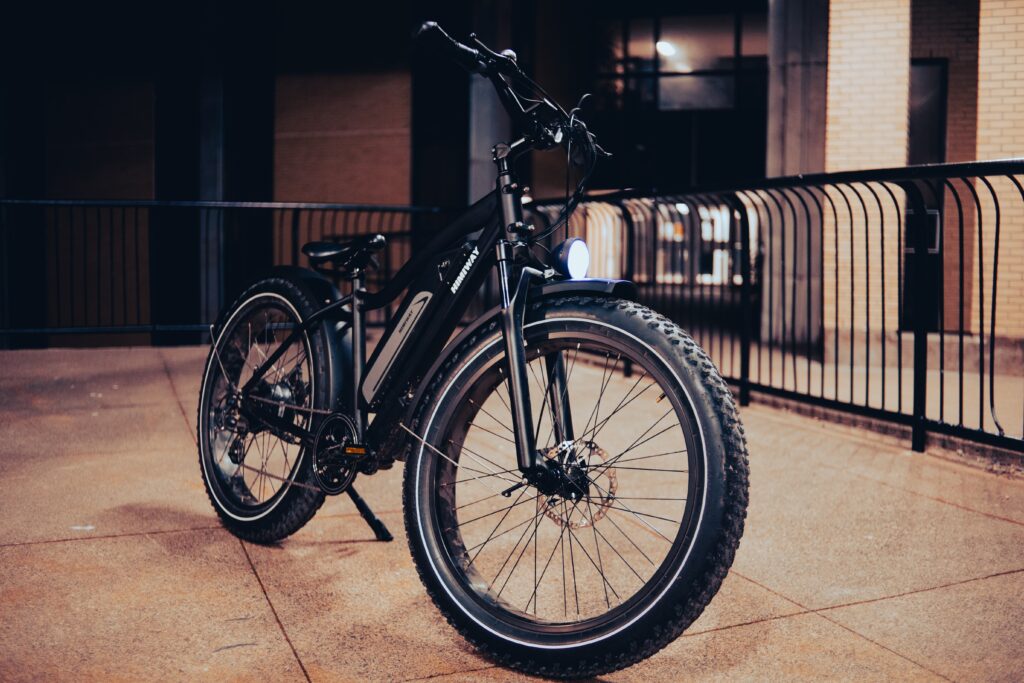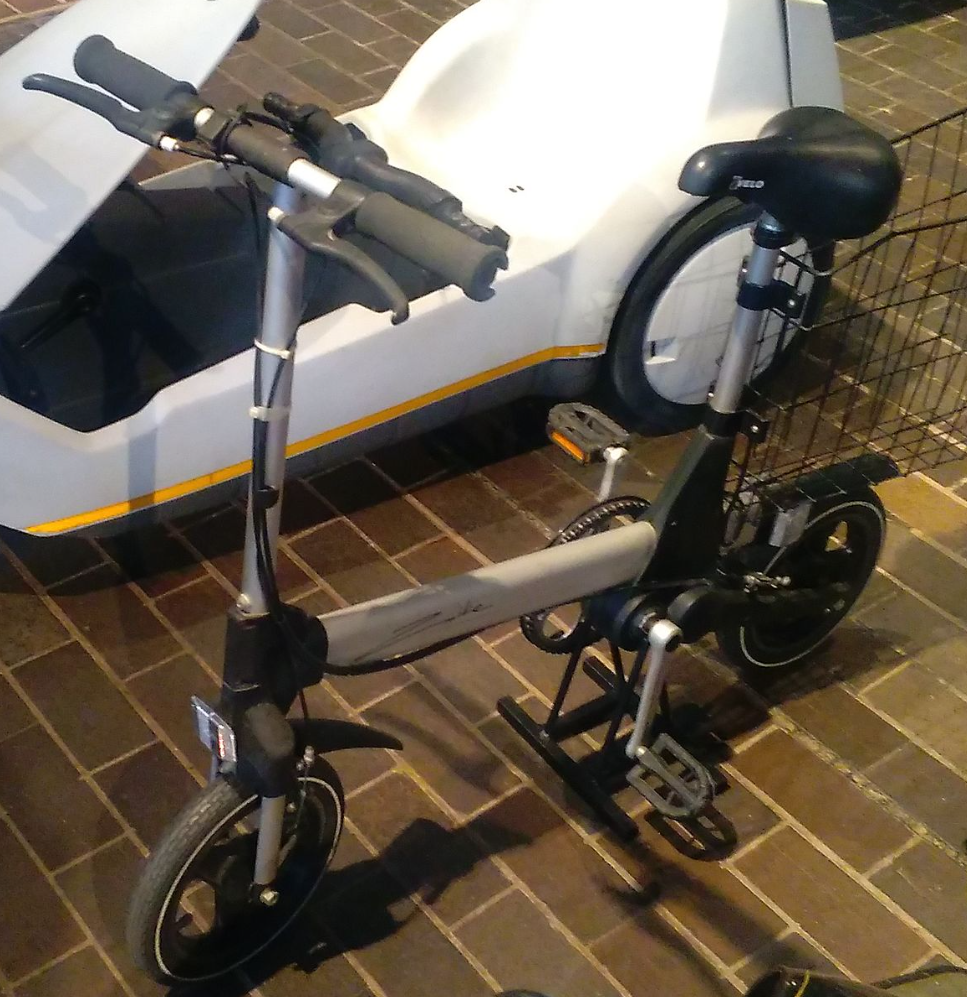Electric bikes are more popular than ever, with purchases up across the globe. As battery and motor technologies continue to improve, it’s never been easier to get hold of an ebike to suit your needs. But it wasn’t always so easy …
Before e-bike technology was advanced enough to make the kinds of electric bikes we’re used to seeing, there were all kinds of strange inventions and innovations from early pioneers of this particular mode of transportation.
You might be surprised to learn that the electric bike has a history that stretches back almost as far as the common bicycle! And without those early pioneers striving to make bicycle transportation a little faster and easier, we wouldn’t have the vast and advanced selection of electric bikes currently on the market.
History’s First Electric Bike: Ogden Bolton
The earliest electric bicycle patent (that we’re aware of) can be traced right the way back to 1895. A man by the name of Ogden Bolton Jr. filed for a cycle machine which sported a “direct current hub motor mounted in the real wheel”.
Not much is known about Ogden Bolton. Only that he had a brilliant idea but the technology of the time limited its execution. The DC (direct current) brushed motor had 6 poles and a ten volt battery which pushed 10 amps to the motor installed in the rear hub. As you can see from the diagram below, there were no pedals either. There wasn’t a gear system which probably meant the battery wouldn’t last long at all.

An image from Ogden Bolten registered in 1895
As you can see, the battery is fitted underneath the horizontal tube with wires attached to an operating switch at the front and the motor at the back. Direct drive hub motors certainly aren’t unusual today, so it’s interesting to see that this early example is not too dissimilar to the e-bikes we’re used to.
We don’t know how many of Ogden Bolton’s creations were made (if any), or if they caught on at the time. What we do know is that it was a time of huge innovation and change in the field of electronics. It was likely that advances in technology, especially around batteries, would have made such an early design obsolete very quickly. These bikes probably never left the paper on which they were written, but even so, it shows the intent to create electric bikes was there even in the late 19th century.
Histories First Electric Tricycle
Bolton was actually pipped to the post for the very earliest of electrically-powered cycling machines, as electric tricycles existed as far back as 1881, created by Gustave Trouvé of France. This very early experiment used an existing tricycle: the Starley Conventry Lever Tricycle which was originally operated by – you guessed it: levers!
When considering electric bikes, however, Bolton still takes the crown.
The Race to Create a Better Electric Bike
Ogden Bolton was not alone in his pursuit to electrify the bicycle. Multiple other patents spring up at the same time, from France, the United Kingdom, and the United States.
In 1897, two years after Bolton’s patent, Hosea W. Libbey from Boston came up with a different idea: an electric bike powered by a double electric motor. This motor, unlike Ogden’s, was set into the hub of the crankset axle, which you can see below in the original patent.
This allowed much higher and more efficient RPM from the motor as the wheel was not being driven directly, but by chain and sprocket gearing. This would have allowed the battery to last longer, the bike to travel more efficiently and possibly even for the components to last longer.

U.S. Patent 596272) 1897
Unfortunately for Libbey, his design did not take off, but the idea did not go totally unused as it was reinvented in the late 90s by popular bicycle manufacturer Giant, for their Lafree E range.
Sadly for Libbey, the time was not quite right for early e-bikes. Historians have disputed why this may be, and it’s most commonly tied to the fact that these designs and patents were being created at the same time as new automobile patents were gaining traction, including electrically powered versions! These early cars would have been very appealing to many; fast, stable and able to carry more than one passenger (as well as luggage), and this may have been a significant contributing factor to many electric bikes being shelved in the patent office.
But whilst the automobile industry certainly had an effect on the popularity of other modes of transportation, it would not stop pioneering engineers continuing to test their own designs of electric bike just yet…Lithium-Ion.
The Path To The Modern: J Steffans Tube Frame
One year later, in 1898, new patents reappeared and we start to see electric bikes that appear much closer to the kinds that we’re used to seeing today.
Our next example by Matthew J Steffans’ was a tube frame, rear-wheel-drive electric bicycle which used a single electric motor and, uniquely, a driving belt along the outside edge of the wheel. You can find the whole patent to his Tube Frame here via Google Patents.
Much like those before him, Steffan’s design didn’t really catch on. Perhaps this was because the drive belt was in constant contact with the road surface, meaning it would likely wear down very quickly. Plus, without any gearing, it would have proven to be relatively inefficient and possibly quite slow.
Schnepf’s Friction Drive Motor Ties The Past and Presant
Another design by John Schnepf, also patented in 1898, used a friction-based, “roller wheel” system to drive the rear wheel. Fitting this “friction drive” to what seems to be an ordinary bicycle, Schnepf’s design gave riders the choice of whether to pedal or use the electric motor to power their bikes! Although without a ratcheting freewheel system, the pedals would have spun constantly under power.
You can find the Schnepf patent here.
The smaller, high RPM drive wheels were much more efficient than previous designs, meaning much smaller motors could provide the same amount of power as a motor driving the wheel directly from the hub.
In fact, Schnepf’s design proved so effective that it was later expanded upon and revised by G.A. Wood Jr. much later in 1969. His design, which also used rollers to drive the rear wheel, had 4 fractional horsepower motors and multiple gears – a real step-up in power and usability from Schnepf’s design.
This “friction drive” concept is still used today and is often adopted by home-made e-bikes for its ability to be retro-fitted to almost any standard bicycle using relatively inexpensive parts.
Problems with Early E-Bikes
Despite the enthusiasm of their inventors, early designs of electric bikes all suffered from one major issue, which arguably led to regular pedal-powered bicycles being the preferred mode of transport across the world. That issue? Batteries.
Specifically, heavy batteries that weighed too much. Early lead-acid batteries, which are the predecessors of those used in cars today, were very large and very cumbersome. To supply the kinds of power needed to drive a bike and its rider, early batteries required large chemical reservoirs to create enough wattage to power the bike’s motors sufficiently. Power density – or the amount of power per volume of battery – was quite low. Can you imagine trying to carry around a big car battery on your bike? The weight must have been quite challenging. Not to mention they were also not very efficient and not easy to recharge.
Electric Bikes Influenced By Historical Motor Vehicles
An important consideration is that this was also a time of pioneering designs for electric automobiles, most of which used batteries, and some of which ran on electrical tracks or overhead cables. Advances in battery technology went hand in hand with electrically-powered vehicles of all kinds. As technology advanced, so could new designs, which pushed engineers to create new technologies – a positive feedback loop.
But unfortunately for both electrical vehicles and batteries, by 1912, Henry Ford had invented the moving automobile assembly line which could produce gasoline powered vehicles much more cheaply than any electric vehicle. The rise of gas-powered cars meant that electrical vehicles and associated battery technology took a backseat to the internal combustion engine.
Imagine how different technology might look if we had continued to use electrically powered cars and bikes through the decades! In some ways, we are only just catching up.
The 20th Century
Thanks in part to Ford and the inevitable global rise of the motor car, it would be years before the electric bike gained the interest of inventors once more. The 20th century was, of course, one of great upheaval, but also one of brilliant innovation and growth. Advancements made during warfare often translated to civilian life and a rush for technological growth and innovation inevitably brought about some big changes to manufacturing and engineering.
The Simplex Ebike
In 1932, one of the first mass-produced electric bikes, brought on by a partnership between Phillips and Simplex, was brought to the market.

This electric bike was powered by a single 200 watt motor and was capable of 25kph (15mph), although this speed was later reduced to 20 Kmh (12mph) for a total range of 80 kilometres. For such a range, the battery needed to be big! At almost 20kg, this huge battery was no lightweight and needed to be charged overnight by a rectifier (a charger than converts AC to DC). Coupled with the 10kg motor, the Phillips Simplex e-bike would have been extremely heavy to move around. The battery was slung low in the frame to keep the centre of gravity as low as possible and the single motor appears to be geared into the drive chain, whilst a separate chain allows the bicycle to be peddle-powered too. It would have been quite a weight to cycle by leg power alone!
TM McDonald’s Hub Motor
The early 20th century saw a spate of other designs, none of which really caught on. In 1938 T.M. McDonald patented a front-wheel electric hub motor that used electromagnets in the rotor (an induction motor), which would have given it quite the power boost over permanent magnet motors of the time. Unfortunately, 1939 saw the start of World War 2 so this design failed to gain much enthusiasm.
A few others came and went after the end of the second world war, but in the main, e-bike technology was developing slowly. Even so, with patents appearing in 1946, 1950, 1975, 1977 and more, there was clearly a strong appetite to make electric bikes work. The Phillips Simplex showed that commercial viability was possible and, as time went on, and technology improved, the e-bike was getting closer and closer to the right time.
The New Era of E-Bikes
Once more, battery technology created big improvements in e-bike design. Nickel Cadmium (NiCd) Batteries, developed throughout the 20th century, improved on the power density of Lead Acid batteries by approximately 50-75%. 1989 saw perhaps the first e-bike using NiCd batteries: the Sanyo Enacle – a rear-wheel hub motor driven e-bike that had a NiCd battery above the rear wheel and a twist throttle on the handlebars, as well as a headlight and indicators!
Zike: Innovation and Failure
1992 saw the release of the Sinclair Zike. The Zike used NiCd batteries that were half the weight of equivalent lead acid batteries. Unfortunately the Zike was a commercial failure, selling only 2000 units, and was ended six months after first production. Some attribute this to the poor reputation of Sinclair after the failure of their other electric vehicle, the recumbent Sinclair C5 in 1985.
Ebike History: Rise of the Pedelec
In 1993, a true breakthrough happened. Yamaha created the first commercial pedal-assist bike. Pedal-assist or Pedelec bikes had been in development for a few years prior to Yamaha’s much larger production numbers, but their Power Assist System (PAS) branded e-bikes really stole the show. Pedal-assist bikes don’t directly drive the motor via a throttle, instead a smaller motor activates when the bike recognizes that the rider is pedaling. This gives riders a power boost as they’re cycling, allowing easier hill-climbs and higher top speeds. The other benefit is that this technology allowed riders to use a pedal-assist bike in a manner very similar to a normal bicycle, making the transition to electric power more accessible. Many countries also do not require pedal-assist e-bikes to follow any laws beyond those for normal bicycles.
Meanwhile, other important technology for e-bikes was being produced. Torque sensors, power controls and regenerative breaking systems were developed in the late 90s, allowing, among other things, more complicated pedelec systems to be produced which allowed riders to choose to only provide power to the motor under a certain load (eg. when pedalling uphill) or convert braking power into battery charge.
Lithium-Ion: Modern Ebikes are born
In the early 1990s, a revolutionary new battery technology solved one of the biggest problems plaguing e-bikes since their inception. Lithium Ion batteries, which were first commercially produced in 1991, had a power density almost 5 times greater than lead-acid batteries, meaning they could be significantly lighter whilst drastically increasing the range of e-bikes. The technology was expensive initially but soon became more commercially viable. Ranges for e-bikes were now averaging 30/40 miles per charge.
By the early 21st century, e-bike production had grown by approximately 35% since 1993. The terms e-bike, power-assist, power bike, pedelec were all common terms to refer to electric bikes. By 2007, e-bikes made up to 20% of all two-wheeled vehicles in many Chinese cities. Popularity was soaring, across the globe.
These days, widespread Lithium Ion and even Lithium Polymer batteries, as well as brushless motors (thanks to widespread use of neodymium magnets) give ranges up to 60, even 80 miles and beyond. You can use them in all weather, specifically the rain, and they last a lot longer than older bikes and batteries.
Today’s E-Bikes
With current technology refined over more than 120 years, e-bikes are better and more popular than ever. With climate awareness on the rise, a cleaner, greener mode of transportation with the ease of use, maneuverability and easy storage of a bicycle and the power of an electric motor, give riders more options than ever before. As e-bikes have zero emissions, riders can feel secure in the knowledge that they aren’t contributing to air pollution and are helping to fight climate change.
For recreation, e-bikes allow riders to explore further than ever before, taking winding trails and rolling hills effortlessly. Sure, there might be the odd puncture, but they hold up much better than ever before. Rides which used to be punishing are now a delight as electric motors assist riders in the most challenging of terrains in a safe way. Off-road and mountain biking disciplines have benefited from these advances in technology too, giving people a new way to enjoy their sport or opening it to a whole new audience.

Ebiking For All: Electric Bike History to Fruition
With ample power, maneuverability and efficiency, its also now easier than ever to commute through city streets, weaving in and out of traffic. The powerful motors make it simpler to carry extra luggage, which is why so many people are adopting e-bikes as their preferred city commute vehicle. Even better, they provide a cleaner alternative for transporting goods; ideal for courier services or small-scale mobile catering!
Whether you’re commuting to work, zipping through city streets, or taking a scenic ride across rolling hills, e-bikes give the option to go further than ever before, for all types of riders. For the first time, those who may find traditional bicycles too demanding can use pedal-assist e-bikes to give them a helpful boost, or cruise down the road on a full-powered e-bike. Young or old, everyone is able to use these simple, economical transports to go further than ever before, making long demanding bicycle commutes or trips accessible to everyone, of any ability.
We have much to thank those early pioneers of electric bikes for, and now that the technology has truly caught up to their collective vision, e-bikes are more popular than ever and definitely here to stay. No one can say what the future will hold, but for the e-bike, it looks to be a very bright future indeed.
Enjoyed our article? Check out our other informative articles on electric bikes, or our electric bike reviews. Something to share? Contact us!


